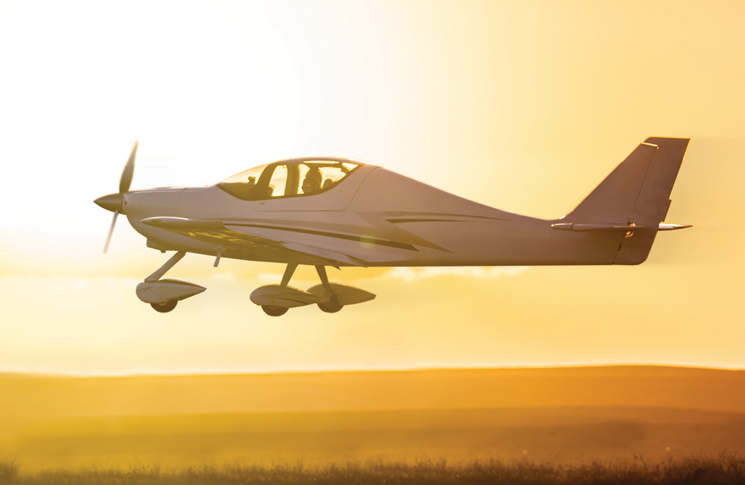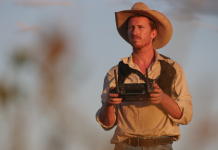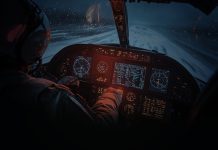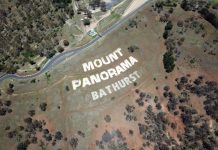Good ones are your best friends, bad ones are treacherous enemies, so sort out your aviation habits, says Kreisha Ballantyne.
I was recently asked to join the SBS panel show Insight as an audience participant. The topic of the show was ‘habits’ and I was invited to speak about the importance of habits as a pilot.
The other audience participants were a blend of professionals and individuals – experts in their fields such as a neurosurgeon, habit consultant, chef and comedian, as well as individuals who had broken habits to achieve their goals.
The show, as the title suggests, gave me a much deeper insight into understanding habits and their importance – both as positives and negatives – to pilots, as well as other aviation professionals, such as ATC and maintenance crew.
What is a habit?
The first part of the show examined what habits are and how they differ from routines. As Associate Professor Gina Cleo, a habit specialist from Bond University explained, ‘A habit is a behaviour we’ve repeated so often, and in the same context, that with time it becomes automatic in our brain. Putting on our seatbelt is a habit and the context for that is sitting in the car – we don’t get the urge to put on our seatbelt in any other place.’
Going on to explain how habits are formed, she said, ‘Habits are triggered in our internal or external environment. Most of our habits are subconscious. The reason we form habits is because we make tens of thousands of decisions every day and if we had to make every one of those consciously, we’d be exhausted. Our brain creates habits as a means to conserve energy so we can put those mental resources towards other things.’
Associate Professor Mac Shine from the University of Sydney explained the neuro structure of habits by comparing the brain to a restaurant. ‘Imagine a restaurant scenario where people are coming in to have food,’ he said. ‘The waitstaff will be like the cerebral cortex, the outer layer of our brains. When they receive their order, they pass it down to the kitchen, which is represented by the cerebellum, which is in the base of our brain and has about half of the neurons. So, the cerebellum makes the food and sends it back to the waitstaff to pass on to the customer. Imagine it’s the restaurant’s first day – the head chef is going to be stressed out, not knowing who’s going to come in through the door or what they’re going to eat. But over time, we start to develop canals and paths in the process, which makes the brain more efficient. The more we do something, the easier it gets. So, a habit in this context is the cerebellum and cerebral cortex learning how to balance who’s going to do what for the brain to work effectively.’
What is a routine?
Gina Cleo said, ‘While habits are automatic and are triggered by our environments, routines are consciously thought about.’
Participant Kate Krieg, who lost 30 kilos in weight after changing her routine, detailed her success of setting up conscious routines. ‘To lose weight, I made 100 to 200 little changes,’ she said. ‘One of the changes I made was to place my sneakers by the door, so when I came home from work, they would remind me to go for a walk. This changed my routine. On the first day, I walked only 20 metres, but it was the start I needed to set up a new set of habits and by the end of the month, I was walking longer distances and losing weight. By making lots of tiny changes like this, I established a routine which led me to achieving my goal.’
The importance of safety habits
My contribution was discussing how one of the most important safety habits a pilot can have is knowing their own strengths and weaknesses. If we know where we fail, as well as where we excel, then we can make sure we build habits around catching our weaknesses and turning them into strengths (or at least turning them into things that won’t kill us or ‘bite us on the arse’ as I said in something of a panic – more about panicking later!)
As pilots, we are ‘taught’ safety habits by instructors but learning to fly places an enormous demand on our brains. As per Mac Shine’s restaurant analogy, not all the habits stick or are carved into the channels of our brains.
Gina Cleo suggests creating good habits is a conscious process involving making an active attempt at change. ‘Decide on a goal and choose a simple action. Pair that behaviour with something in your environment.’
Most of our habits are subconscious.
With this in mind, I spoke to several instructors to take a look at 7 potential and insidious habits pilots may have, and what steps can be taken to change them into successful routines.
Seven deadly habitual sins
1. Cutting corners on your pre-flight
When I was doing my RPL conversion, I met an instructor I’ll never forget. He would follow me through the walkaround, make me touch the part of the aircraft I was checking and then have me verbalise the check. Then, before I entered the aircraft, he’d suggest I take a few steps back and look at the whole picture, a technique I wish I’d learnt before – I once taxied with the tail tie-down still dangling from the aircraft.
His tip is one I have implemented into my walk-around routine and has saved me the embarrassment of realising I’ve forgotten to move the chocks or pitot cover.
2. Scrimping on the checklists
Typically, if you fly the same aircraft each time, you may become so familiar with the checklists that it’s easy to get slack. However, instructors are keen to point out this is one area that can seriously lead to disaster. A good way to combat checklist fatigue, especially on a walk around or pre-start, is to use an app that has a built-in checklist that you manually tick off by tapping the list. Check the app/play store for one specific to your aircraft type.
Safety mostly comes from good habits and well-established routines.
3. Multitasking while taxiing
Interestingly, this is often a habit set up by instructors themselves. I would need more than one hand to count the number of times I’ve had instructors text, program the GPS/autopilot or generally fiddle with their iPads while I’m taxiing. As many instructors have time restraints and many students resent paying for time on the ground, it can be tempting to multitask. However, when I spoke to instructors for this article, many listed this as one of their pet-peeves, stating near-misses, broken wing tip lights and taxiing over wet grass as incidents caused by multitasking. Taxiing too quickly was also added to this list.
Set up good taxiing habits every time you fly by programming the GPS and posting to social media before you release the brakes and by practising excellent airmanship the minute the throttle is moved forward.
4. Head-down-itis
As more and more schools modernise their fleet, and private buyers look towards glass cockpits, there’s a lot more going on inside a modern cockpit than one with a traditional six-pack arrangement. Couple that with the increased use of tablets and we have more distractions inside the cockpit than ever. One Bankstown-based instructor said he often covers the primary flight display in the training phase to encourage pilots to practise the habit of scanning outside, particularly in the training area.
5. More right rudder!
Every instructor I spoke to mentioned this: rudder skills are a learnt habit. Poor rudder skills, as well as a lack of practice in crosswind landings, can be a serious safety issue. Uncoordinated turns can become stalls; the importance of keeping the ball in the centre is often drilled into students by instructors who’ve seen it all, only to become a lax habit over time. ‘This is the one thing I will always focus on in a flight review,’ a Moorabbin-based instructor told me. ‘In my opinion, this is the number one poor habit picked up by pilots post PPL,’ she said.
6. Stage fright
Radio calls can be intimidating, particularly in controlled aerodromes. However, they can be practised again and again, instructors believe this is an excellent habit to develop. When I was learning to fly in CTA, my instructor would suggest I make the call first without transmitting. This is a habit I still have (although I now tend to do this in my head, rather than out loud, particularly if I’m carrying pax) and, as a consequence, my radio technique has improved exponentially.
7. Failing to file a flight plan
Whether you fly in CTA or not, filing a flight plan is an important habit to establish. An NZ-based air traffic controller once told me, ‘This is the single-most important thing I can stress as an ATC: file a flight plan. That way, should an incident occur, we have you in our system and it’s much easier to assist you.’
Using an EFB makes flight plan filing a quick and painless process that should take no more than a few minutes and is an excellent safety habit to set up.
Excellent habits are conscious
To end on a positive, I asked instructors about the most positive habits or safety routines they observed in pilots. Each agreed that flying is a skill set and, while natural aptitude does come into play, pilot safety mostly comes from good habits and well-established routines.
1. Avoiding complacency
Complacency is well documented in aviation, to the point where the ‘1,000- hour pilot’ has become something of a cautionary tale. Documented to be the tipping point of complacency, the 1,000-hour mark is where pilots start to become a little lax with their weight and balance, P charts or pre-flights. ‘I’m always extra observant of pilots around the 1,000-hour mark,’ an instructor told me. ‘It’s certainly not always the case, and it very much depends how quickly those 1,000 hours are built up, but I am most certainly looking for complacency and a loosening of routines, such as checklists and
pre-flights.’
2. Acknowledging the influence of stress
In the scheme of things, human factors is a relatively new subject; yet pilot-related accidents still feature frequently in the ATSB reports. Stress is a response to the brain being overloaded, and the better one understands their stress triggers, the safer they are.
For instance, I have a tendency to panic – momentarily – before my logical brain takes over. Being aware of this is vital as that allows me to give myself a short moment to acknowledge this before taking action.
I have trained myself to recognise the panic, say to myself, ‘OK, the time for panic is now over’ and proceed knowing I have identified a stress factor.
3. Knowing oneself
This cannot be stressed enough: the better your self-awareness, the safer you will be as a pilot. Know your weaknesses and work to make them strengths.
If you’re lax with the checklists, back yourself up with an app. If you tend not to file a flight plan, be aware of this and establish filing a plan for every flight as part of your routine. As Aristotle said, ‘Knowing yourself is the beginning of all wisdom.’
Know your weaknesses and work to make them strengths.






Comments are closed.